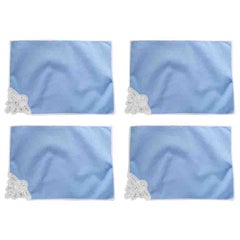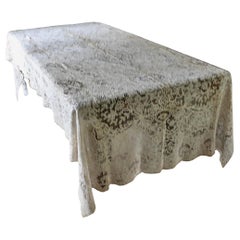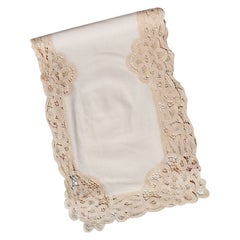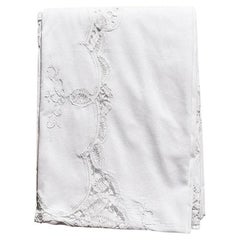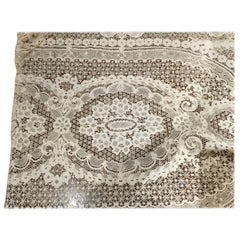Battenberg Lace
20th Century American Victorian Tableware
Fabric
Antique Late 19th Century Belgian Late Victorian Tableware
Cotton
20th Century English Victorian Tableware
Fabric, Thread
Recent Sales
20th Century American Victorian Tableware
Fabric
Antique Late 19th Century Belgian Tableware
Cotton
People Also Browsed
Vintage 1950s Italian Religious Items
Metal
20th Century French Books
Paper
Mid-20th Century Barware
Fabric
Antique 1860s Religious Items
Fruitwood
Antique 19th Century Oceanic Organic Modern Natural Specimens
Coral
Early 20th Century German Black Forest Animal Sculptures
Wood
Vintage 1950s French Mid-Century Modern Armchairs
Rope, Wood
Late 20th Century American Art Deco Books
Paper
Antique 19th Century French Louis XV Sofas
Upholstery, Wood
Early 20th Century English Edwardian Coat Racks and Stands
Mahogany, Pine
Antique 1780s French Louis XVI Beds and Bed Frames
Leather, Walnut
Antique 15th Century and Earlier French Medieval Religious Items
Glass, Wood, Parchment Paper
Mid-20th Century American Mid-Century Modern Tableware
Fabric
Vintage 1930s American Machine Age Books
Paper
Early 20th Century Books
Paper
Antique Mid-18th Century Italian Architectural Elements
Wood
Finding the Right Tableware for You
While it isn’t always top of mind for some, antique and vintage tableware can enhance even the most informal meal. It has been an intimate part of how we’ve interacted with our food for millennia.
Tableware has played a basic but important role in everyday life. Ancient Egyptians used spoons (which are classified as flatware) made of ivory and wood, while Greeks and Romans, who gathered for banquets involving big meals and entertainment, ate with forks and knives. At the beginning of the 17th century, however, forks were still uncommon in American homes. Over time, tableware has thankfully evolved and today includes increasingly valuable implements.
Tableware refers to the tools people use to set the table, including serving pieces, dinner plates and more. It encompasses everything from the intricate and elaborate to the austere and functional, yet are all what industrial product designer Jasper Morrison might call “Super Normal” — anonymous objects that are too useful to be considered banal.
There are four general categories of tableware — serveware, dinnerware, drinkware and, lastly, flatware, which is commonly referred to as silverware or cutlery. Serveware includes serving bowls, platters, gravy boats, casserole pans and ladles. Most tableware is practical, but it can also be decorative. And decorative objects count as tableware too. Even though they don’t fit squarely into one of the four categories, vases, statues and floral arrangements are traditional centerpieces.
Drinkware appropriately refers to the vessels we use for our beverages — mugs, cups and glasses. There is a good deal of variety that falls under this broad term. For example, your cheerful home bar or mid-century modern bar cart might be outfitted with a full range of vintage barware, which might include pilsner glasses and tumblers. Specialty cocktails are often served in these custom glasses, but they’re still a type of drinkware.
Every meal should be special — even if you’re using earthenware or stoneware for a casual lunch — but perhaps you’re hosting a dinner party to mark a specific event. The right high-quality tableware can bring a touch of luxury to your cuisine. Young couples, for example, traditionally add “fine china,” or porcelain, to their wedding registry as a commemoration of their union and likely wouldn’t turn down exquisite silver made by Tiffany & Co. or Georg Jensen.
It’s important to remember, however, that when you’re setting the dining room table to have fun with it. Just as you might mix and match your dining chairs, don’t be afraid to mix new and old or high and low with your tableware. On 1stDibs, find an extraordinary range of vintage and antique tableware to help elevate your meal as well as the mood and atmosphere of your entire dining room.
